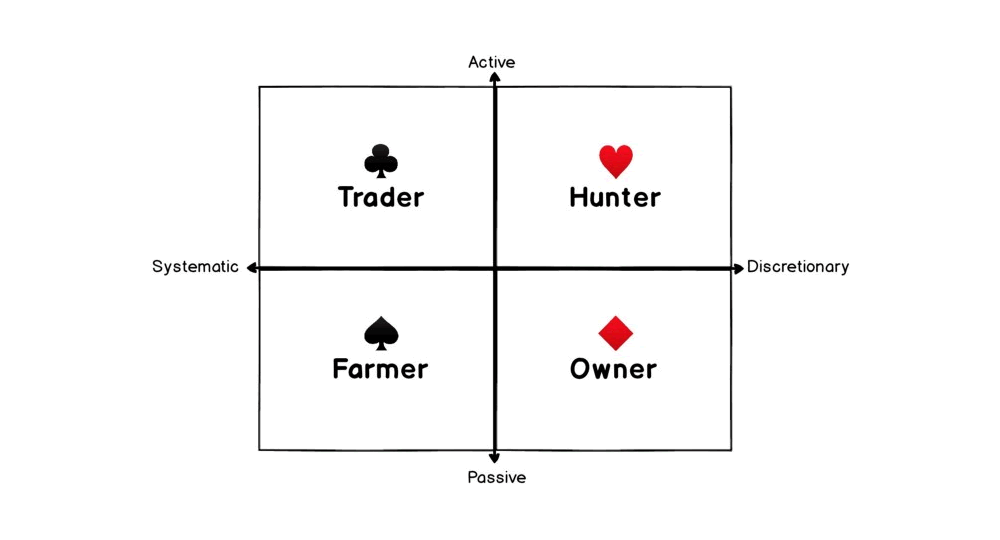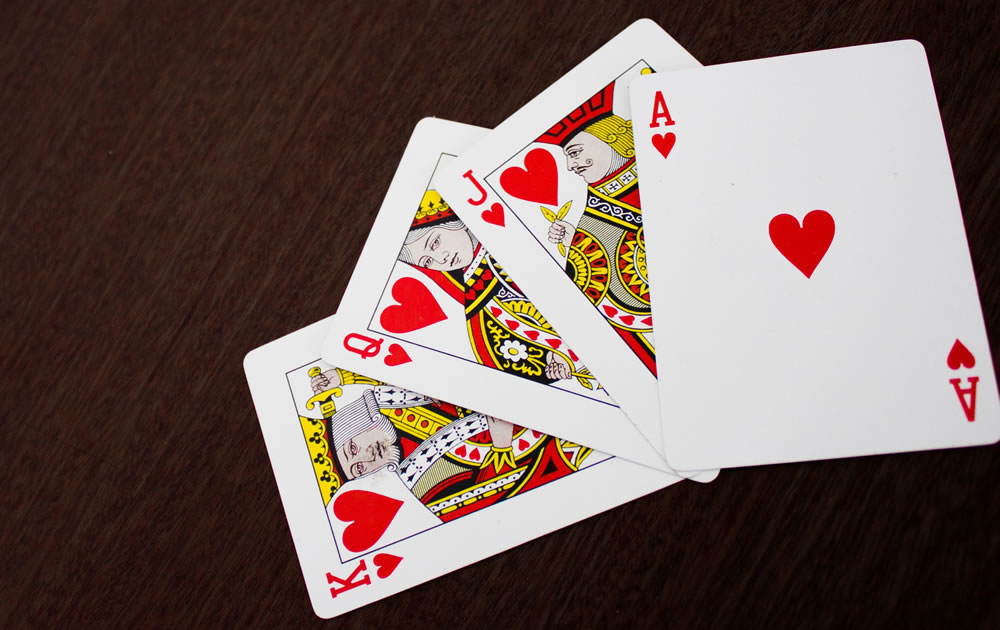Words by Ben Hobson, markets editor at Stockopedia
There are many ways to reach success in the stock market, and among investors, just like in a game of poker, there are different types of player.
Bartle’s Taxonomy of Game Player Types is a deceptively simple system that classifies online game players as one of four archetypes (explorers, killers, achievers and socialisers). Bartle imaginatively maps these four classifications to the four suits of a card deck. It’s a very simple model and one that can be adapted neatly to different investor types.

Investors according to two simple dimensions
At the simplest level, there are two dimensions which affect investment decisions:
⦁ Action Dimension – from ‘active’ to ‘passive’.
⦁ Decision Dimension – from ‘systematic’ to ‘discretionary’.
Active investors like to deal frequently, on a daily or monthly basis, while passive investors prefer to hold their shares for longer, as in months to years. Systematic investors tend to use an objective rule-based approach to investing, based on theory or experience, while discretionary investors tend to use their own subjective decisions based on judgement, common sense or intuition.
By applying these two dimensions as axes on a grid we can map out four investor archetypes: Trader, Hunter, Farmer, Owner, similar to the four suits of a card deck:
The four investor suits
The Trader – Clubs

The Trader is the most active and dominating of the archetypes, best represented by the suit of clubs. The Trader seeks return drivers through trend following and swing trading, often across short timeframes.
They have a keen motivation to win which is why so many ex-sports players are attracted to trading practices, keenly watching market action to identify entry/exit points, favouring experience as a source of decision confidence. As a result, they’re most likely to suffer from control illusion and over-confidence that may lead to over-trading.
The Hunter – Hearts

The Hunter is the most social and emotional of the archetypes, and thus best represented by the suit of hearts. They seek mispricings as return drivers and often invest over medium term timeframes to allow these mispricings to correct. They have a keen motivation to stalk the market, listening to networks of smarter investors to generate ideas, and favour their intuition as a source of decision confidence.
They are most likely to suffer from confirmation bias due to a tendency to collect supporting information as well as a tendency towards over-optimism.
The Farmer – Spades

The Farmer is a rational type best represented by the suit of spades. They seek beta return drivers through factor investing techniques. They often invest anywhere from short to long-term timeframes depending on the factors targeted and are motivated by harvesting market rewards.
They generate ideas by sorting the market through the use of databases and gain decision confidence through theory and evidence. As a result, they’re most likely to suffer from data-mining bias.
The Owner – Diamonds

The owner is often archetypally the older and wealthier investor, best represented by the suit of diamonds. They seek the power of compounding and dividends in high-quality stocks as return drivers.
They often seek to invest over long timeframes and are motivated by accumulation. They generate their ideas through reading annual reports and financial statements analysis. They gain their decision confidence from perceived common sense and good judgement. The major behavioural biases that flaws the owner is attachment bias which leads to the opportunity costs of loss-aversion.
Which type is best?
There is no silver bullet when it comes to successful investing. All archetypes are valid and each approach will generate profit. Not through luck, but through the skilled development of their style, managing their biases and by targeting specific return drivers.






















